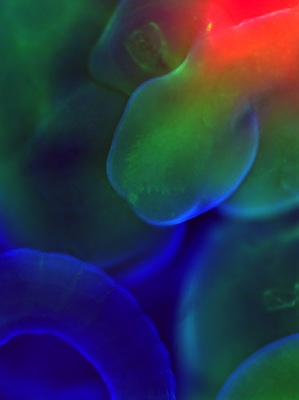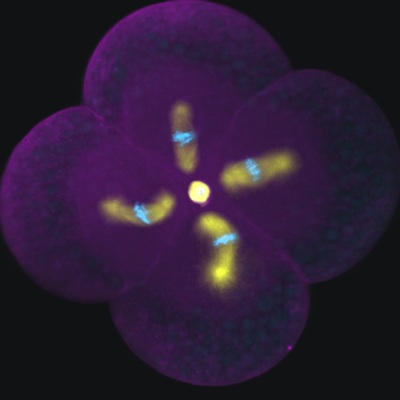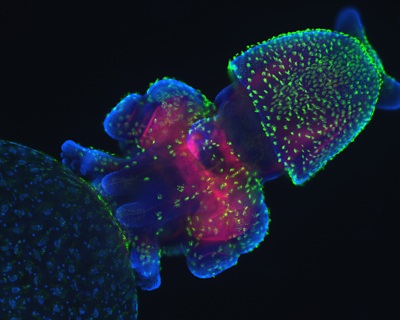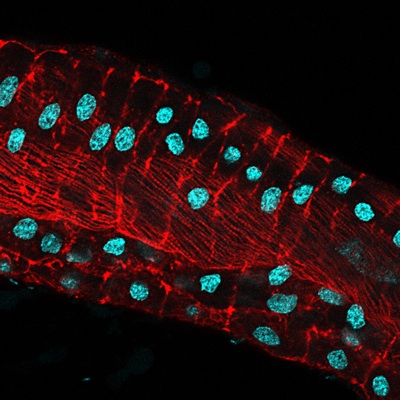Select a Development cover – round 2
Posted by the Node, on 21 April 2011
A few weeks ago, you selected this sea urchin image from the Woods Hole embryology course as a cover for Development. We have many more images from this course, and more opportunities to choose a journal cover. Here is the second batch.
Which of these images would you like to see on the cover of Development? Please vote in the poll below the images. (Click any image to see a larger version.) You can vote until May 3, 12:00 (noon) GMT
 1. Developing pharyngeal arch region of mouse embryo showing immunofluorescence detection of neurofilaments (green), DiI labeling of trigeminal ganglion (red), and nuclei detected with DAPI (blue). This image was taken by Hozana Andrade Castillo (University of Sao Paulo).
1. Developing pharyngeal arch region of mouse embryo showing immunofluorescence detection of neurofilaments (green), DiI labeling of trigeminal ganglion (red), and nuclei detected with DAPI (blue). This image was taken by Hozana Andrade Castillo (University of Sao Paulo).
 2. Crepidula fornicata (slipper limpet) embryo undergoing cleavage from 4 to 8 cells. Confocal image shows DNA in blue (DAPI) and microtubules in yellow (alpha tubulin). This image was taken by Anna Franz (University of Oxford).
2. Crepidula fornicata (slipper limpet) embryo undergoing cleavage from 4 to 8 cells. Confocal image shows DNA in blue (DAPI) and microtubules in yellow (alpha tubulin). This image was taken by Anna Franz (University of Oxford).
 3. Confocal image of a squid embryo. All nuclei are stained with DAPI (blue). Phalloidin staining reveals neural structures (red), while cilia on the surface of the embryo are highlighted by acetylated tubulin staining (green). This image was taken by Davalyn Powell (University of Colorado Denver).
3. Confocal image of a squid embryo. All nuclei are stained with DAPI (blue). Phalloidin staining reveals neural structures (red), while cilia on the surface of the embryo are highlighted by acetylated tubulin staining (green). This image was taken by Davalyn Powell (University of Colorado Denver).
 4. Muscle of the ascidian, Ciona intestinalis, visualized by phalloidin staining (red). Nuclei (blue) stained with DAPI. This image was taken by Christine Carag Krieger (University of Pennsylvania).
4. Muscle of the ascidian, Ciona intestinalis, visualized by phalloidin staining (red). Nuclei (blue) stained with DAPI. This image was taken by Christine Carag Krieger (University of Pennsylvania).


 (8 votes)
(8 votes)
great pictures!
Still thinking many times back to this great and unique course,… thanks for organizing and putting so much effort and enthousiasm in it!
Lg
Ktrien de mulder (student 2009)
wonderful images – cephalopod embryos are pure beauty :) although I like the spiral cleavage of Crepidula !!
Congratulations to Hozana Andrade Castillo on winning this round with a colourful image of a mouse embryo pharyngeal arch region!
I’ll announce it properly tomorrow. (Bit of a delay because we had to do one final check to make sure the image would show up okay in cover size, since it’s a bit smaller than the others, but it’s fine and looks pretty even when blown up to cover size!)
I am not sure about image 3, Is that a phalloidin staining?